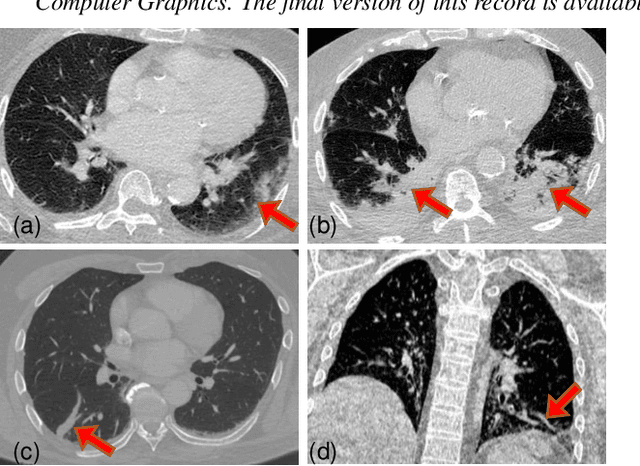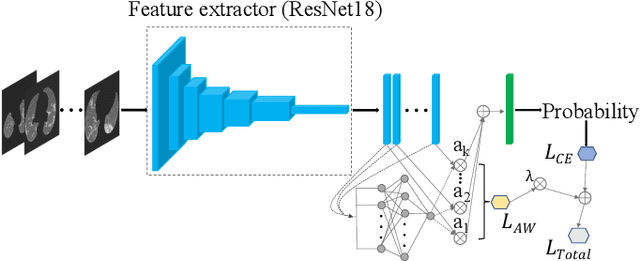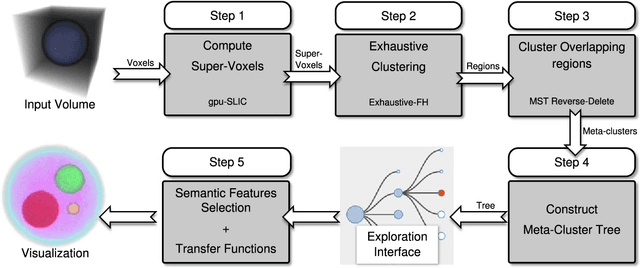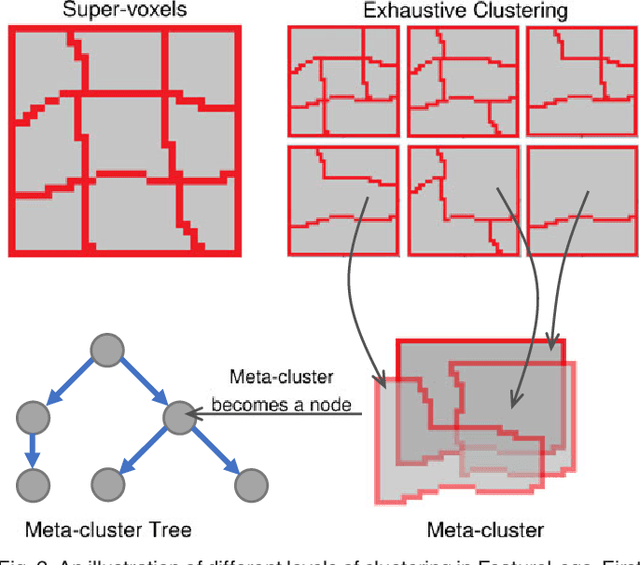Shreeraj Jadhav
COVID-view: Diagnosis of COVID-19 using Chest CT
Aug 09, 2021



Abstract:Significant work has been done towards deep learning (DL) models for automatic lung and lesion segmentation and classification of COVID-19 on chest CT data. However, comprehensive visualization systems focused on supporting the dual visual+DL diagnosis of COVID-19 are non-existent. We present COVID-view, a visualization application specially tailored for radiologists to diagnose COVID-19 from chest CT data. The system incorporates a complete pipeline of automatic lungs segmentation, localization/ isolation of lung abnormalities, followed by visualization, visual and DL analysis, and measurement/quantification tools. Our system combines the traditional 2D workflow of radiologists with newer 2D and 3D visualization techniques with DL support for a more comprehensive diagnosis. COVID-view incorporates a novel DL model for classifying the patients into positive/negative COVID-19 cases, which acts as a reading aid for the radiologist using COVID-view and provides the attention heatmap as an explainable DL for the model output. We designed and evaluated COVID-view through suggestions, close feedback and conducting case studies of real-world patient data by expert radiologists who have substantial experience diagnosing chest CT scans for COVID-19, pulmonary embolism, and other forms of lung infections. We present requirements and task analysis for the diagnosis of COVID-19 that motivate our design choices and results in a practical system which is capable of handling real-world patient cases.
FeatureLego: Volume Exploration Using Exhaustive Clustering of Super-Voxels
Oct 11, 2018



Abstract:We present a volume exploration framework, FeatureLego, that uses a novel voxel clustering approach for efficient selection of semantic features. We partition the input volume into a set of compact super-voxels that represent the finest selection granularity. We then perform an exhaustive clustering of these super-voxels using a graph-based clustering method. Unlike the prevalent brute-force parameter sampling approaches, we propose an efficient algorithm to perform this exhaustive clustering. By computing an exhaustive set of clusters, we aim to capture as many boundaries as possible and ensure that the user has sufficient options for efficiently selecting semantically relevant features. Furthermore, we merge all the computed clusters into a single tree of meta-clusters that can be used for hierarchical exploration. We implement an intuitive user-interface to interactively explore volumes using our clustering approach. Finally, we show the effectiveness of our framework on multiple real-world datasets of different modalities.
 Add to Chrome
Add to Chrome Add to Firefox
Add to Firefox Add to Edge
Add to Edge